The Meaning and Symbolism Behind Tswana Traditional Dresses
The Meaning and Symbolism Behind Tswana Traditional Dresses
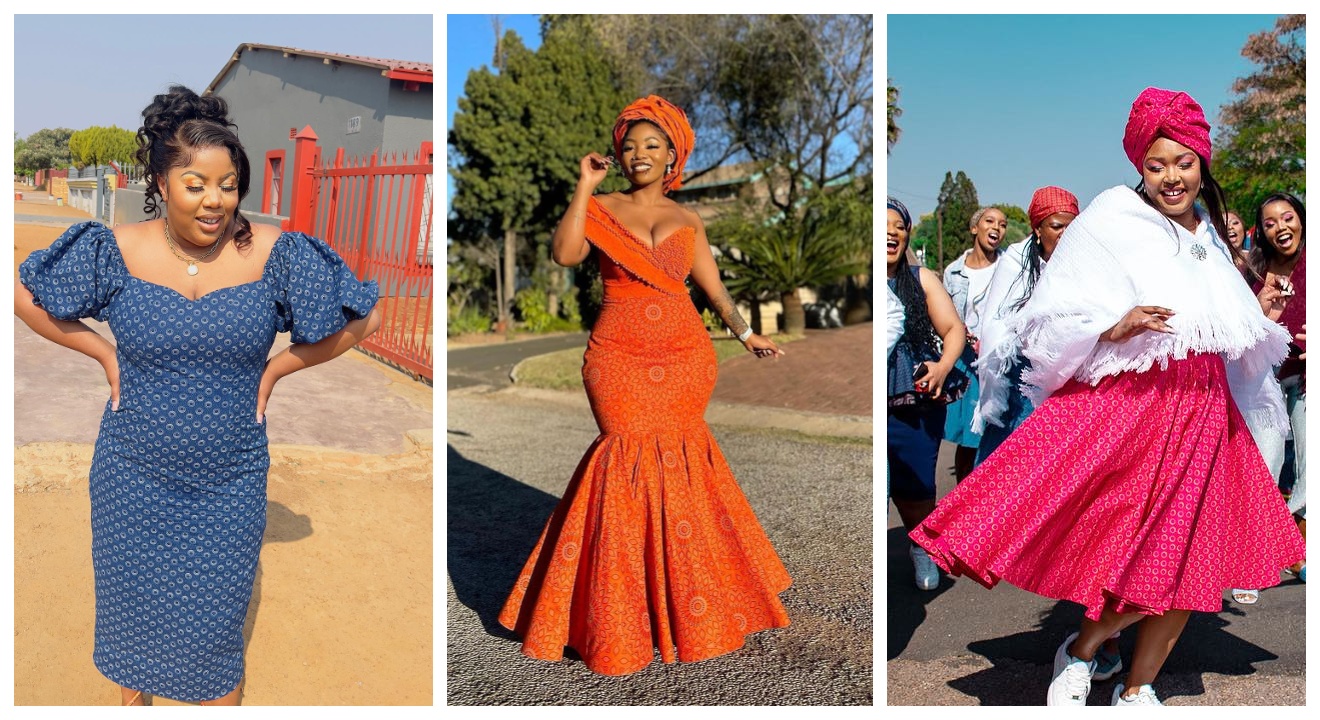
Introduction
Tswana traditional dresses hold a rich cultural significance in Botswana and throughout southern Africa. These garments are so much more than just beautiful attire; they represent a cultural identity and heritage that has been passed down through generations. Let’s delve into the meaning and symbolism behind Tswana traditional dresses.
Brief overview of Tswana traditional dresses and their significance
Tswana traditional dresses reflect the history, beliefs, and values of the Tswana people. They are intricately designed with vibrant colors, geometric patterns, and embellishments. These dresses symbolize various aspects of life, such as a woman’s marital status, age, and social standing. They are also worn during cultural ceremonies, rituals, and celebrations, highlighting the connection between clothing and communal traditions.
The colors used in Tswana traditional dresses have specific meanings. For example, red represents love and beauty, while blue signifies spirituality and healing. Patterns often depict natural elements like animals or plants, showcasing the harmony between humans and nature.
Wearing Tswana traditional dresses is not only a way of preserving cultural heritage but also an expression of pride and unity within the community. It fosters a sense of belonging and reinforces a shared identity among the Tswana people.
The significance of these dresses extends beyond aesthetics. They serve as visual storytellers, conveying messages about the wearer’s roots, beliefs, and societal roles. By donning a Tswana traditional dress, individuals honour their heritage and contribute to the preservation of a vibrant cultural tradition.
In conclusion, Tswana traditional dresses encompass deep symbolism and cultural importance. They are more than mere garments; they carry within them the stories and values that shape the Tswana community.

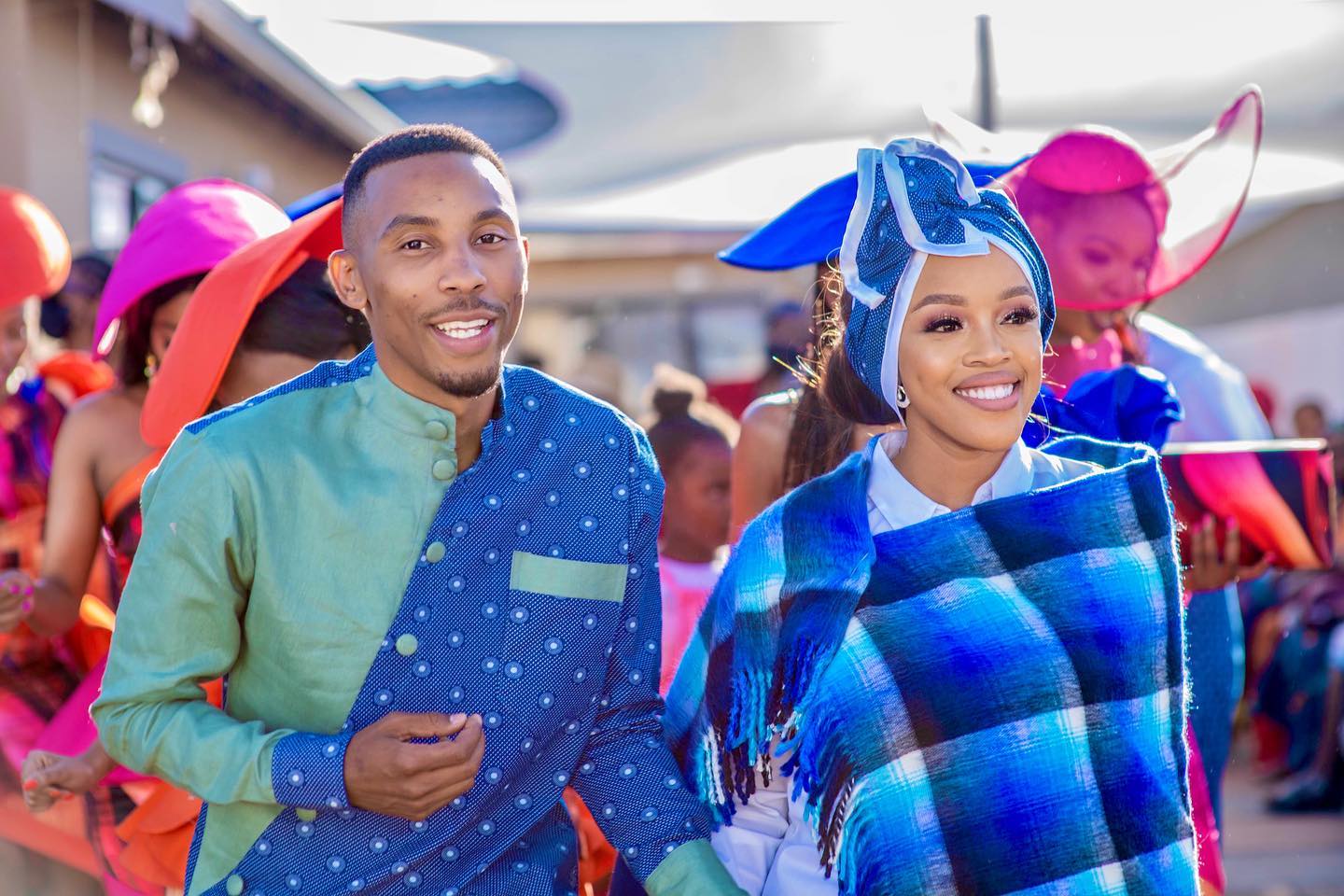
History of Tswana Traditional Dresses
Tswana traditional dresses hold rich cultural significance and have been a part of Botswana’s heritage for centuries. These dresses are not just garments; they represent the unique history and traditions of the Tswana people.
Origins and evolution of Tswana traditional dresses
The roots of Tswana traditional dresses can be traced back to the pre-colonial era when communities showcased their identity through dress. Over time, these garments have evolved, incorporating influences from neighboring tribes and European cultures brought by missionaries and colonizers.
Tswana traditional dresses are known for their vibrant colors, intricate beadwork, and finely detailed embroidery. They often feature geometric patterns inspired by nature and symbols that convey messages about a person’s social status or tribe.
Women typically wear a dress called a “leteisi,” which is a colorful, sleeveless bodice paired with a matching skirt. Men traditionally wear a “khaki” or “bitso,” which consists of loose-fitting trousers and a button-up shirt adorned with embroidery.
Today, Tswana traditional dresses are not only worn on special occasions or cultural events but also embraced by fashion enthusiasts who appreciate their beauty and cultural significance. These dresses have become an important symbol of pride, identity, and connection to the Tswana culture.
In conclusion, Tswana traditional dresses have a long and fascinating history that reflects the traditions and heritage of the Tswana people. They are not just garments but works of art that celebrate their vibrant culture for generations to come.
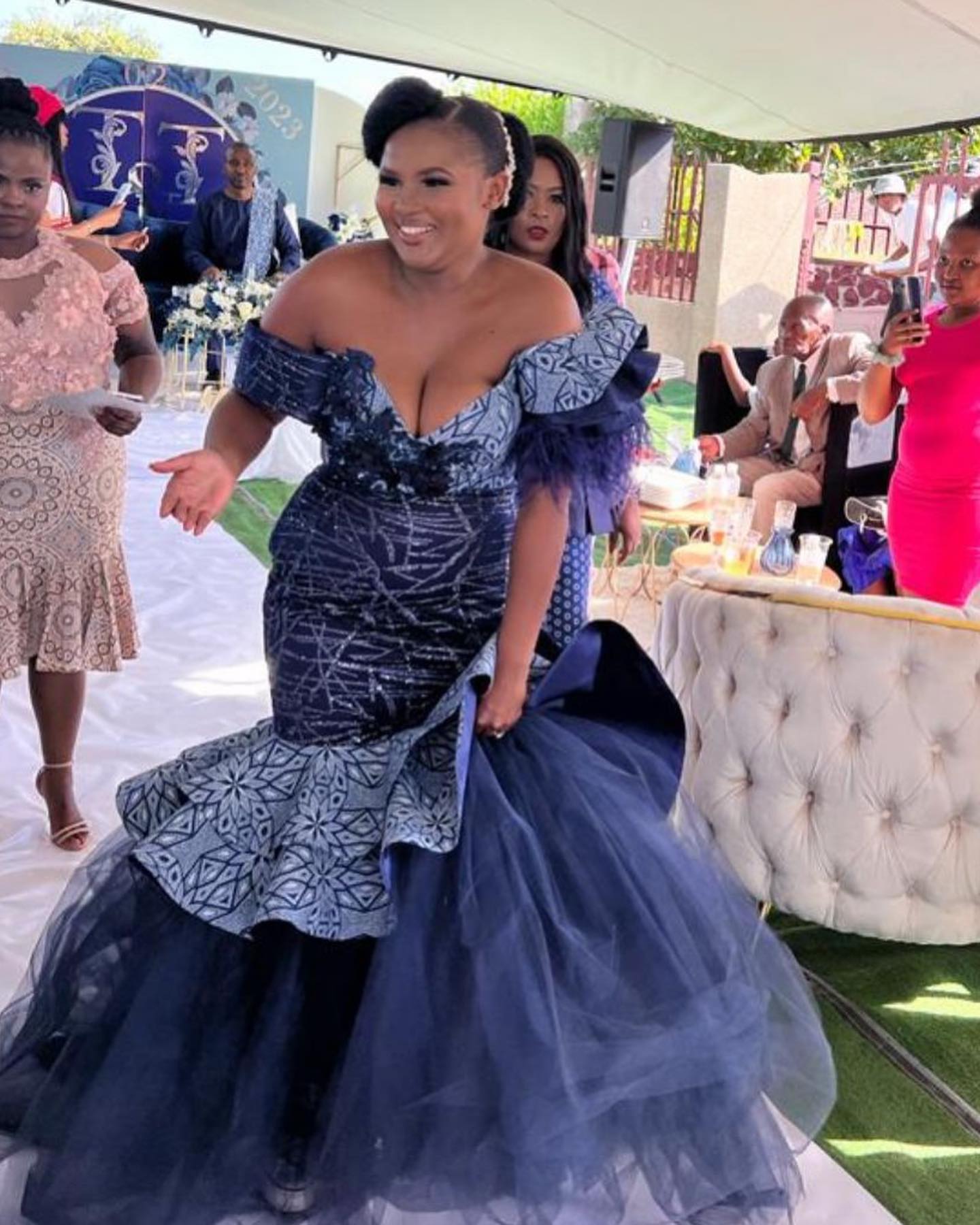

Types of Tswana Traditional Dresses
When it comes to Tswana traditional dresses, there are several types that showcase the rich culture and heritage of the Tswana people. These dresses are not only beautiful but also hold deep meaning and symbolism.
Description and characteristics of different styles of Tswana traditional dresses
- Leteisi: This style of dress is characterized by its vibrant colors and intricate geometric patterns. It is often made from a fabric called “leteisi,” which is known for its bold designs and eye-catching appeal.
- Mmamokgwa: The mmamokgwa dress is a traditional outfit worn by married women. It features a long skirt with pleats and a matching top. The colors and patterns used in this dress often reflect the woman’s marital status and her role within the community.
- Tsholofelo: The tsholofelo dress is commonly worn by young girls and unmarried women. It is characterized by its simplicity and elegance, with clean lines and minimal embellishments. The colors used in this dress are often softer and more subdued compared to other styles.
- Mojosti: Mojosti dresses are known for their vibrant colors and bold patterns. They are often worn during special occasions or celebrations, such as weddings or initiation ceremonies. The mojosti dress is adorned with intricate beadwork, embroidery, and other decorative elements.
- Moriti: The moriti dress is a traditional outfit worn by men during ceremonial events. It consists of a long-sleeved shirt, pants, and a beaded belt. The colors and patterns used in this dress hold cultural significance and represent the wearer’s tribe or clan.
These different styles of Tswana traditional dresses not only showcase the beauty of the culture but also tell a story and symbolize important aspects of Tswana life.
Colors and Patterns in Tswana Traditional Dresses
The vibrant and intricate designs of Tswana traditional dresses hold significant meaning and symbolism within the culture. Each color and pattern tells a story, representing various aspects of life and heritage.


Meanings and symbolism behind the colors and patterns used in Tswana traditional dresses
- Red: Symbolizes vitality, power, and courage. It represents the energy and strength of the Tswana people.
- Blue: Represents calmness, peace, and serenity. It symbolizes harmony within the community.
- Yellow: Signifies wealth, prosperity, and abundance. It is associated with happiness and celebration.
- White: Represents purity, innocence, and spirituality. It is often worn on special occasions to showcase grace and elegance.
- Black: Symbolizes wisdom, knowledge, and resilience. It is a color of reverence and respect for ancestors.
Patterns in Tswana traditional dresses also hold significant meaning:
- Traditional Motifs: The use of geometric shapes and patterns represents cultural values, spirituality, and historical events.
- Animal Prints: Animal prints symbolize strength, power, and connection to nature.
- Diamonds: Diamond-shaped patterns symbolize wealth, longevity, and prosperity.
- Circles and Spirals: Circular patterns represent eternity, unity, and community bonds.
Tswana traditional dresses are not only a form of self-expression but also a way to preserve cultural heritage. Through colors and patterns, these garments tell stories that connect the present with the past, showcasing the rich traditions of the Tswana people.
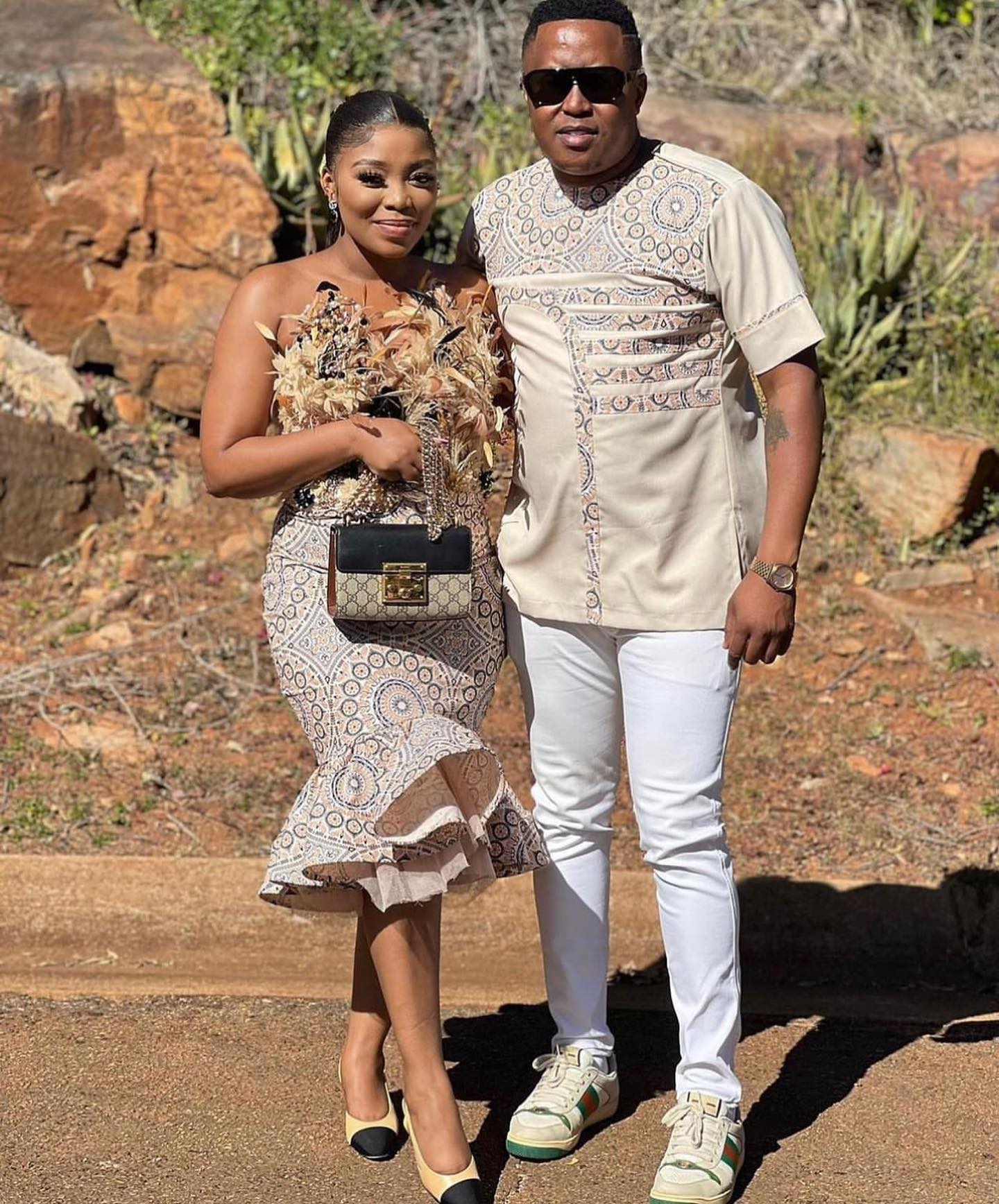

Accessories and Embellishments
Tswana traditional dresses are not just garments; they are rich in meaning and symbolism. These dresses are often adorned with various accessories and embellishments that add to their beauty and cultural significance.
Traditional accessories and embellishments that accompany Tswana dresses
- Headgear: One of the most prominent accessories is the headgear, known as “Dikuku.” It is often made from colorful fabric and intricately wrapped around the head, symbolizing different aspects of the wearer’s social status or marital status.
- Jewelry: Tswana women love to accessorize their traditional dresses with jewelry such as necklaces, bracelets, and earrings. These pieces are usually crafted from beads, shells, or metal, and they add a touch of elegance to the overall look.
- Printed fabrics: Tswana dresses feature vibrant and bold patterns, known as “Seshoeshoe,” which are integral to their identity. These printed fabrics are meticulously selected, representing cultural heritage, occasions, or personal preferences.
- Belt: A belt known as “Lebani” is often worn around the waist, bringing attention to the curves of the body while also providing a beautiful contrast to the dress’s pattern and color.
- Embroidery: Intricate embroidery is another embellishment commonly seen on Tswana dresses. This delicate art form adds an extra layer of detail and craftsmanship to the dress, reflecting the skill and creativity of the wearer.
Tswana traditional dresses are not just clothing; they carry stories of tradition, culture, and personal identity. The accessories and embellishments make them even more unique and visually striking, allowing individuals to express their heritage with pride.


Cultural Significance
The cultural significance and symbolism of Tswana traditional dresses in ceremonies and celebrations
Tswana traditional dresses hold great cultural significance among the Tswana people of Botswana. These vibrant and beautifully crafted garments are worn during ceremonies and celebrations to showcase their rich heritage and identity.
The dresses are intricately designed with various motifs and patterns that represent the cultural beliefs and values of the Tswana community. Each design carries its own symbolism, often depicting aspects such as ancestry, spirituality, or important life events.
Not only do the dresses hold symbolic meaning, but they also serve as a visual representation of pride and unity. When individuals don these traditional garments, they embody a sense of belonging and express their cultural identity with pride.
In Tswana society, ceremonies like weddings, initiation rituals, and festivals are incomplete without the presence of these traditional dresses. They play a vital role in maintaining cultural traditions and passing down ancestral knowledge from one generation to another.
Furthermore, the colors used in Tswana traditional dresses also hold symbolic significance. For example, vibrant shades such as red symbolize passion and vitality, while blue represents calmness and tranquility.
Overall, Tswana traditional dresses serve as a powerful symbol of cultural preservation, identity, and unity within the Tswana community. They not only reflect their rich heritage but also foster a sense of pride and belonging among individuals who wear them during significant cultural events.
Contemporary Adaptations
Tswana traditional dresses have a rich cultural significance and symbolism. These beautifully crafted garments are not just clothing but a form of artistic expression. However, as times change, so do fashion trends. Modern adaptations of Tswana traditional dresses have emerged to suit the contemporary lifestyle while still honoring the heritage.
Modern adaptations and influences on Tswana traditional dresses
Today, Tswana traditional dresses have embraced various modern influences, combining the traditional elements with contemporary design aesthetics. Designers are experimenting with colors, fabrics, and patterns to create innovative and stylish adaptations. The use of vibrant colors, intricate beadwork, and unique prints infuse a sense of modernity into these timeless garments.
Celebrities and fashion influencers are also playing a significant role in popularizing Tswana traditional dresses. Their support and endorsement have brought global attention to this remarkable cultural attire. Today, you can find Tswana traditional dresses on runways, red carpets, and social media platforms, showcasing the fusion of tradition and modernity in fashion.
The meaning behind Tswana traditional dresses goes beyond just aesthetics. These garments reflect the rich history, cultural heritage, and identity of the Tswana people. By embracing modern adaptations, they continue to evolve as symbols of pride and celebration while bridging the gap between tradition and the contemporary world.
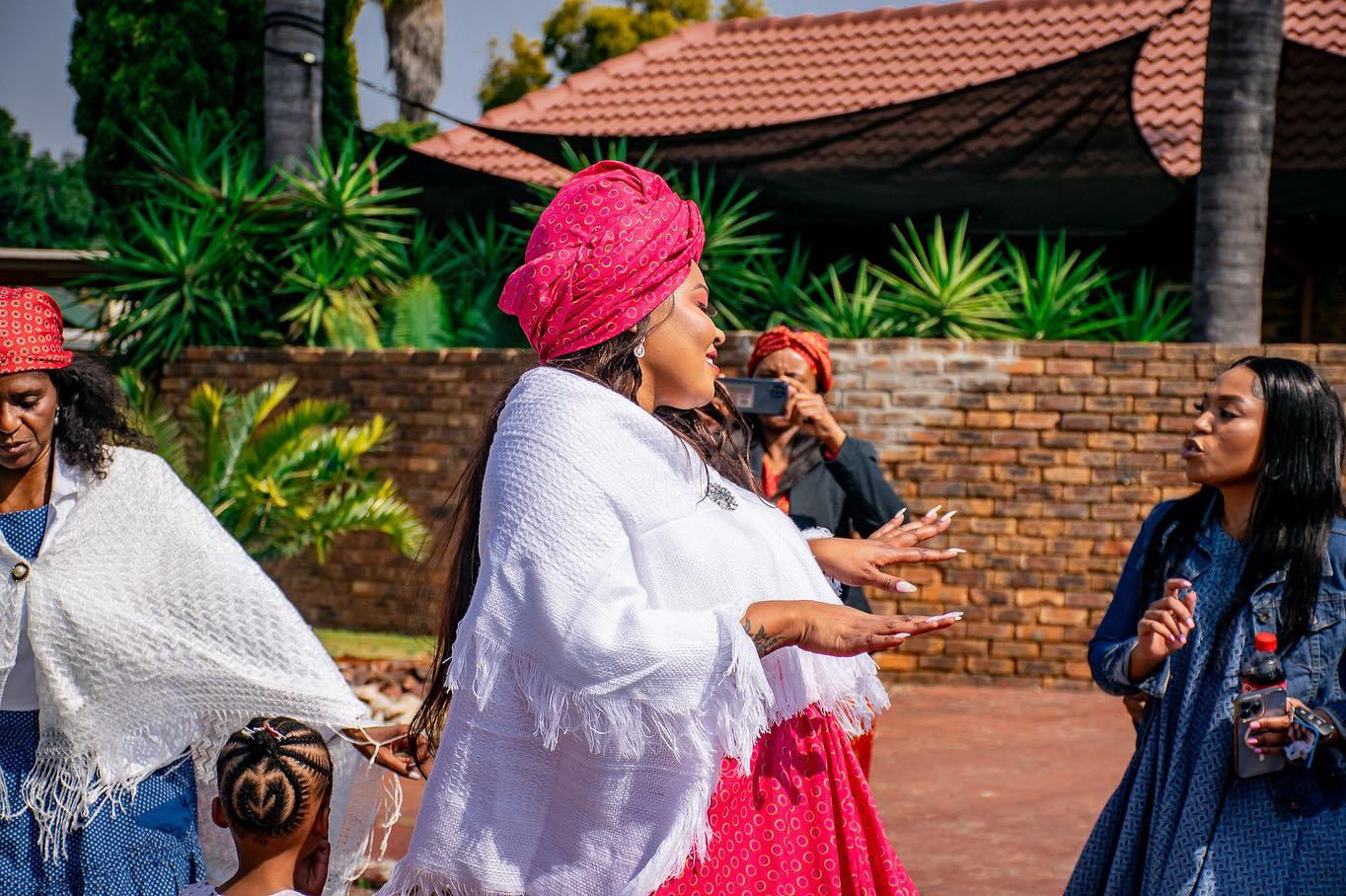

Preservation and Revival
The Tswana traditional dresses hold deep meaning and symbolism within the Tswana culture. These garments are not just beautiful pieces of clothing but represent the rich history, identity, and heritage of the Tswana people.
Efforts to preserve and revive the art of Tswana traditional dressmaking
Recognizing the significance of these traditional dresses, there have been concerted efforts to preserve and revive the art of Tswana traditional dressmaking. Various organizations, individuals, and cultural institutions have taken up the responsibility of documenting and passing on the knowledge of this art form to future generations.
They conduct workshops, host exhibitions, and organize fashion shows to showcase the beauty and craftsmanship of Tswana traditional dresses. Through these initiatives, they aim to create awareness, appreciation, and demand for these unique garments.
The revival of Tswana traditional dressmaking has also created economic opportunities for local artisans. Many young designers are now incorporating elements of Tswana traditional dresses into their contemporary designs, creating a fusion that appeals to a broader audience.
Moreover, there has been a conscious effort to include Tswana traditional dresses in national events, ceremonies, and celebrations. This recognition at a larger scale helps to keep the art form alive and relevant in modern times.
By preserving and reviving the art of Tswana traditional dressmaking, the culture and heritage of the Tswana people continue to be cherished and celebrated. These efforts ensure that future generations proudly embrace their cultural identity through the beauty and symbolism woven into every stitch of a Tswana traditional dress.
Conclusion
Tswana traditional dresses are not just beautiful garments, but they also hold deep meaning and cultural significance. Each dress tells a story and represents the heritage of the Tswana people. By wearing these dresses, individuals are not only embracing their culture but also appreciating the craftsmanship that goes into creating them. The vibrant colors, intricate patterns, and unique designs make Tswana traditional dresses a true work of art. So next time you see someone wearing a Tswana traditional dress, take a moment to appreciate the beauty and cultural heritage it represents.
Appreciating the beauty and cultural heritage of Tswana traditional dresses
Tswana traditional dresses are more than just clothing; they are a reflection of the rich cultural heritage of the Tswana people. These dresses feature vibrant colors, intricate patterns, and unique designs that make them stand out. The meanings behind the different elements of these dresses vary, but they often symbolize aspects such as fertility, community, and spirituality. By wearing Tswana traditional dresses, individuals not only showcase their sense of style but also honor the traditions and history of their people.
FAQ (Frequently Asked Questions)
- What materials are Tswana traditional dresses made from?
Tswana traditional dresses are typically made from various fabrics such as cotton, satin, or silk. These fabrics are then adorned with embroidery, beads, or other decorative elements to enhance their beauty. - Can anyone wear a Tswana traditional dress?
Yes, anyone can wear a Tswana traditional dress. Whether you are a member of the Tswana community or simply appreciate the culture and aesthetics of these dresses, you can proudly wear one to celebrate and honor the Tswana heritage. - Where can I purchase a Tswana traditional dress?You can find Tswana traditional dresses at local markets, online stores specializing in African fashion, or even through custom dressmakers who specialize in traditional attire.
- Can Tswana traditional dresses be worn for special occasions?Absolutely! Tswana traditional dresses are often worn for special events such as weddings, cultural festivals, or important ceremonies. They add a touch of elegance and cultural authenticity to any occasion.

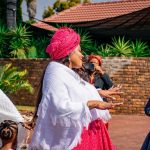










Comments are closed.